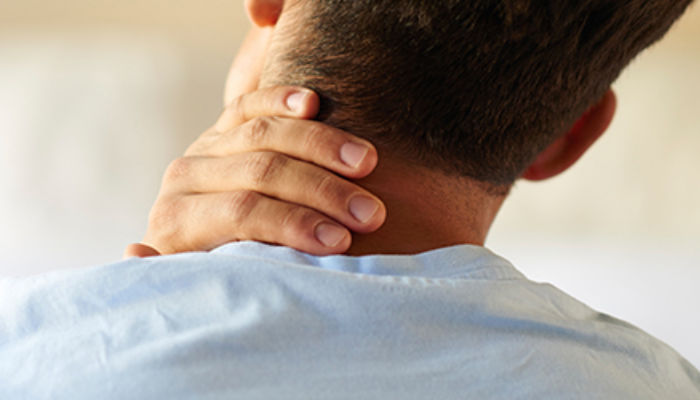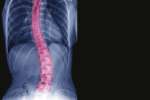By Rod Walker
rwalker@clarionledger.com
FLOWOOD, Mississippi
For David Burleson of Clinton, the pain was so severe he had to get out of his company truck and lie in the vehicle’s bed.
“It was like a toothache that just wouldn’t go away,” recalled the 47-year-old, who had surgery five weeks ago. Although most people don’t experience the severity of neck- and back-related pain Burleson endured, they perhaps will experience some level of pain in that area of the body in their lifetime.
“It’s very common, especially when people get to their late 30s and 40s,” said Rahul Vohra, a physiatrist, or rehabilitation physician, at NewSouth NeuroSpine Center in Flowood. “Once they get there, they may start experiencing neck or back pains.”
According to a report in the Annals of Internal Medicine, roughly 13 percent of American adults suffer from neck pain at any given time. And that report also points out half of all adults have had the ol’ pain in the neck at one time or another. Secondary to chronic spinal conditions, it affects 25 to 30 percent of the U. S. population.
“Most of the problems people encounter as they get older are from the degenerative process,” said Dr. Greg Wood, spine surgeon at NewSouth NeuroSpine Center. “As we age, the disks degenerate and that makes us susceptible to neck pain.”
But there are some things that people can do to help alleviate the ol’ pain in the neck.
The symptoms of neck pain are divided into two categories. The first
is just simple axial neck pain, which is related to muscular strains and
spasms. The second is a bit more serious and causes discomfort in the
shoulders and arms. This kind , which affected Burleson, usually
requires surgery.
But axial neck pain, which can last from just a few hours to several weeks, usually requires nonoperative treatment.
“This is basically someone who wakes up with a crick in his neck,” Wood said. “Most of them aren’t going to require surgical treatment. These kind of problems generally resolve just by removing the aggravating factors.”
Wood lists several possible contributing factors. A person could be sleeping in a awkward position. Or perhaps he is on the phone at work and thus has his neck in an abnormal position.
“One of the most common things that I see is people with their
computer screen in the wrong place,” Vohra said. “It’s either too high
where their neck is cocked up too high or too low and their head is
cocked down all day long. It should be at eye level so the neck is not
in an awkward position.
“The other thing is the position of the chair. If you are too far away
from your desk and having to lean forward, that causes strains. ”
But while posture is a major contributor, Vohra lists it as just third on the major contributors to neck pain.
“The No. 1 thing (among factors you can control) is smoking. Tobacco use accelerates degenerative disc disease,” he said. “That’s the one thing that people can control themselves. Second, would be fitness. People who don’t do any type of exercise are at higher risk. You get muscle weakness and imbalance and over time that causes biomechanical problems that can lead to pain.”
Wood recommends that people whose job requires them to talk on the
phone use a headset. And Vohra offers this suggestions when sleeping.
“Use a firm pillow that gives good support,” he said. “Foam pillows
usually work well. If you are a side sleeper, you want your neck
straight. You don’t want the pillow so high that your head is cocked up
and too low that it’s cocked down. You want the spine to stay aligned.
On your back it doesn’t really matter as much. But usually people’s neck
problems isn’t because of how they are sleeping. That’s usually more of
a symptom and not a cause.”
Neck pain is one of the issues that if you address it early, you can
usually get good results. If you wait years and years before trying to
address it and it becomes a chronic problem, it’s much more difficult to
cure, Wood said.
*
To comment on this story, contact Rod Walker at (601) 961-7298.
TIPS
* Alternate ice/heat treatments
* Take over-the-counter nonsteroids
* Get rest
* Avoid aggravating positions/activities
* Engage in gentle yet active range of motion movements
* Do aerobic conditioning
Source: Dr. Greg Wood, spine surgeon at NewSouth NeuroSpine
LEARNING TO COPE
Seek medical advice when:
* Pain is in the shoulder blade, shoulder joint, arm, forearm or hand
* Weakness/numbness is felt in the upper extremities
* Neck pain is not improving after three weeks of self treatment
Prevention
* Take frequent breaks from aggravating factors combining with frequent stretching program
* Adjust work space so head and neck are eye-level with computer
* Avoid sleeping on stomach and use proper cervical support
Source: Dr. Greg Wood, spine surgeon at NewSouth NeuroSpine






